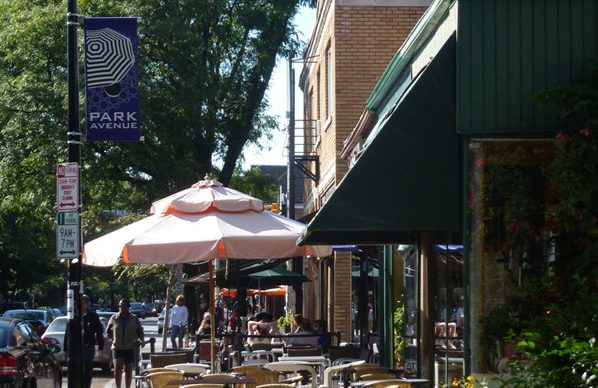
The Park Avenue Neighborhood of Rochester, NY
To look back at the beginnings of our country surprises many people. What dry stories they learn in school look totally different when one walks the countryside, sails the boats and tours the buildings built then, if they still exist. Park Avenue is no different. All of America began as native Indian lands, bought by enterprising Europeans. The land was then used for farming or industry, begun by the entrepreneurs of the day. Park Avenue, along with all of Rochester, began as a flour city and then morphed into the Flower City. Along the way, some cool things happened.
The 100-acre plot that would become Rochesterville and later Rochester was bought by Colonel Nathaniel Rochester and two other men from Maryland. Mills sprang up in which to process the wheat grown nearby. The water surrounding the village meant transport of the village’s goods to market. When the Westward-Ho! movement killed the flour mills, flowers became the thing. Seeds companies sprang up, some becoming the largest in the world (and still are today) such as Ellwanger & Barry Nursery Company.
Now it’s the mid-1800s. George Eastman with his Kodak Company, Jacob Bausch and Henry Lomb founded Bausch and Lomb, Western Union Telegraph was begun by Hiram Sibley and Don Alonzo Watson, and Robert French founded the R. T. French Company (known today for French’s mustard). The automobile industry even had a presence in Rochester in the form of the Cunningham pioneering auto, made by carriage builder James Cunningham toward the close of the century. Industry abounded, and its workers needed homes.
In the Park Avenue sector of the now ballooning city, workers’ homes were built around the Alexander Street portion of the neighborhood. They can still be seen there today.
The turn of the century saw all those mills and flower concerns turning into desirable residential areas. East Avenue and Park Avenue were the most desirable for affluent families. Designed in the mid-1800s, Park Avenue merged with Bates Street and Crescent Street to form the neighborhood recognizable today. It began its usefulness as a shopping street for the wealthy of East Avenue, but became popular later as home sites for not-as-affluent-as-East-Avenue but still affluent people.
Picture these neighborhoods growing out of the dust and clamor of an industrial area. Grass grew, trees flowered and homes rose. These were the first residential neighborhoods in the downtown area. The neighborhood hit a bit of a decline when businesses began relocating elsewhere, water transportation and the railroads died off, and “civil unrest” as it says on Wikipedia all occurred. Park Ave living kept its cachet, however, but with some of the mansions being divided into apartments.
The late 1990s and early 2000s saw a period of rejuvenation, when people again saw the beauty of living downtown in cities. They moved from suburbs into the cities. Festivals, boutiques, craft foods and drinks, multi-use buildings all found a new life in big cities, just like they have in Rochester and Park Avenue.
